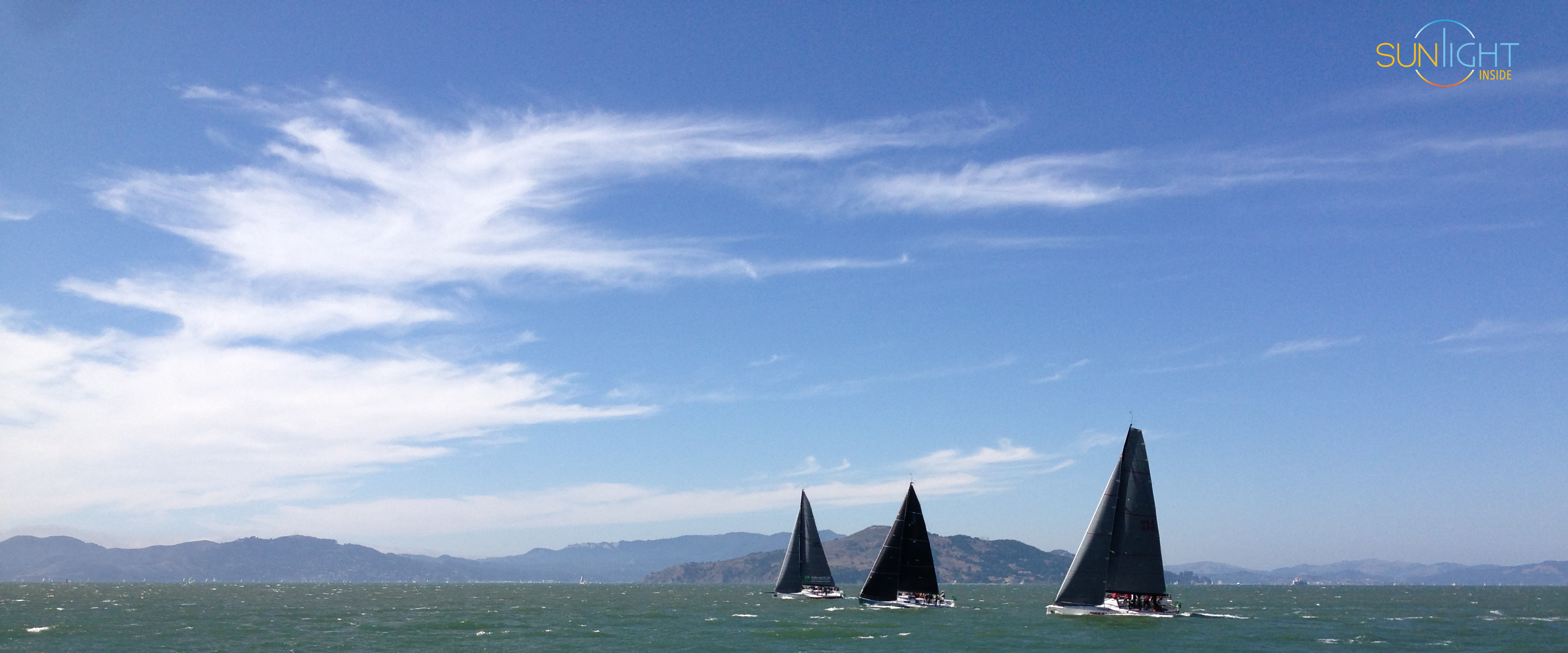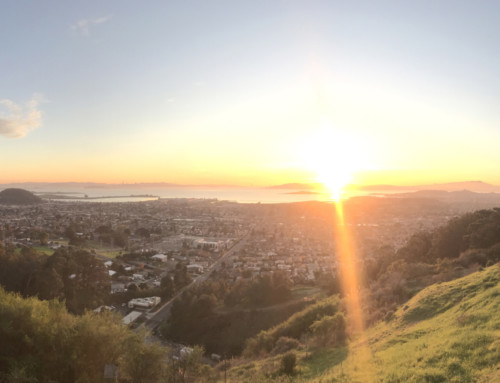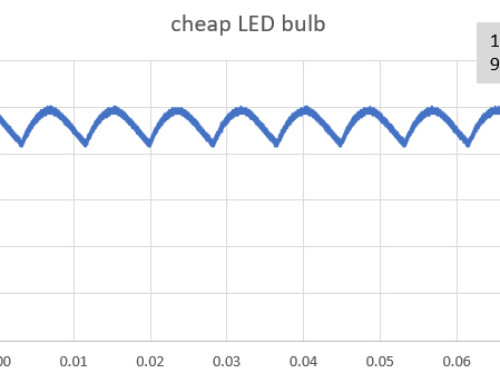In high school biology we (supposedly) learned that rods and cones are the basis of our visual system. Quick refresher = cones are photoreceptors which see color and we have three types (red, green and blue), while rods are photoreceptors which respond to intensity and help us see in black-and white (basis of our night and low-light vision). The signals from these photo-receptors are transmitted to our brains via our optic nerve where the patterns are interpreted to form images, helping us to visualize the world around us.
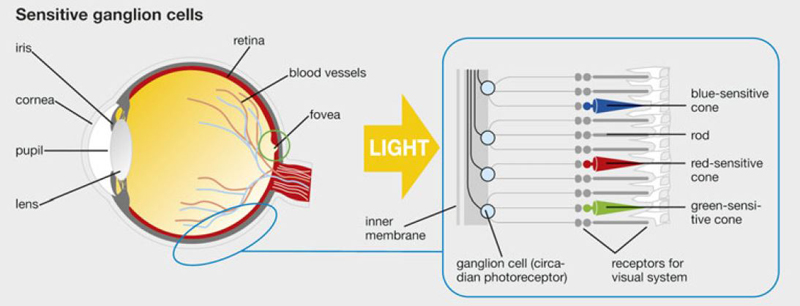
we have three different photoreceptors in our eyes – graphic borrowed from licht.de.
In 2002 scientists discovered a 3rd type of photoreceptor in our eyes called a retinal ganglion cell which is how our bodies sense the time of day. We’re still learning about all the things these ipPRGCs do, but we know they are sensitive to blue light, and are connected to a part of our brain where our internal body clock is located = the suprachaisamatic nucleus (SCN). The SCN works with the pineal gland and other hormone systems to regulate our circadian rhythms and hormone cycles – critical for how we work, play and rest. These ipRGCs are ‘non-imaging’, meaning they send biological signals to our bodies, like the time-of-day, but do not (directly) contribute to our visual system.
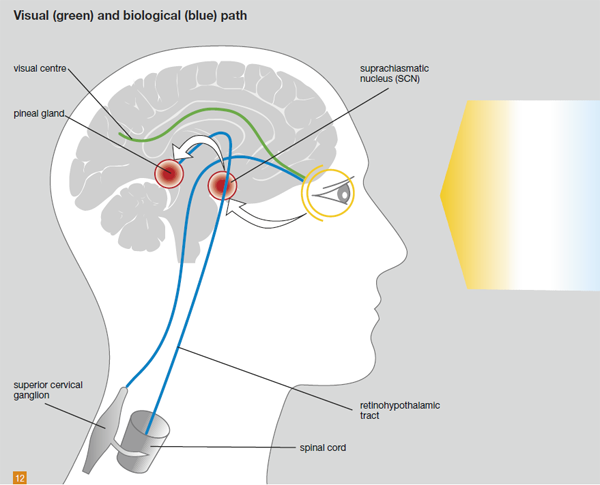
visual and biological pathways from our eyes – graphic borrowed from licht.de.
Studies show that our 3rd photo receptor (ipRGC) measures the amount of blue light to sense what time of day it is, and thereby synchronizes our internal clock, circadian rhythms and hormone cycles. Lots of blue light tells the body ‘time to be awake and alert’ – no surprise given that the dominant color of the sky and day-time sunlight is blue. The absence of blue light at night tells our bodies to ‘rest and recover’. There are some nuances, for example: we’re most sensitive to blue light in the mornings and evenings (during the transitions). Furthermore the latest science shows that the visual (rods and cones) and non-visual (ipRGCs) systems interact, and that other colors of light may have other impacts. In the simplest terms our bodies rely on presence and absence of blue light for our awake and rest signal.

impact of light on our activity/relaxation cycle – graphic borrowed from licht.de.
When we travel to different time-zones, our body clock becomes desynchronized, or confused, which is why we feel lousy as well as sleepy and hungry at odd times of day. Physicians recommend ‘getting outside’ to help overcome jet-lag (note that mornings are best). This is also why sitting in front of screens which emit blue light at night is a bad idea. Studies show very clearly that exposure to blue light at night suppresses our production of Melatonin and has other impacts (makes you hungrier etc). Our bodies rely on the daily cycles of bright blue light, and darkness, to optimize our health and wellness!
additional reading / resources:
– images in this blog post come from an overview of human centric lighting
– wikipedia has a good article on intrinsic ganglion photoreceptors

